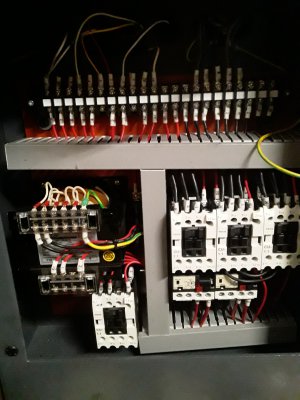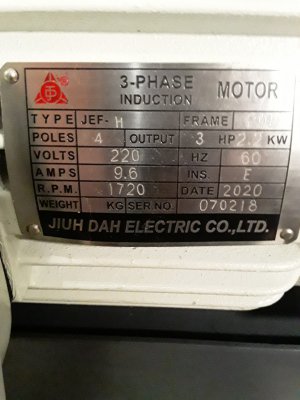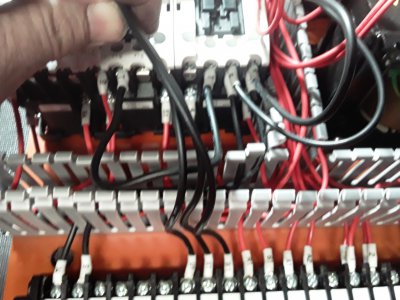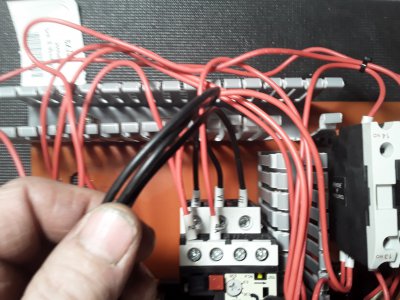First, thank you admins for maintaining the forum!
Second, mksj, you are a rockstar! The technical info you have posted on this site is gold. That you share it for free shows a depth of character very rarely seen these days. I wish you were closer because I would gladly pay to have you set up my new machine & vfd! It's not that I can't, I worked in oil & gas process control 30 years ago, I'm tired and looking for life's easy button. What mental energy I have I'd prefer to spend on making chips, not relearning electronics & controls.
I have been looking at and reading everything I can find in order to power up this new lathe. It's the 3 phase, 3HP model and the vfd is the 22SF. My shop is single phase. My goal is to retain the lathes factory functions and switches as they come from PM. I am not looking to add additional external controls or features. I have read so much that my head is drowning.
I know there isn't a one size fits all and the closet I can find is mksj's post from December 26, 2017 (the day after Christmas!). I will continue studying the files and wonder do you have something simpler? a conversion rather than a full new build?
This is the new lathes control board and motor plate.
Second, mksj, you are a rockstar! The technical info you have posted on this site is gold. That you share it for free shows a depth of character very rarely seen these days. I wish you were closer because I would gladly pay to have you set up my new machine & vfd! It's not that I can't, I worked in oil & gas process control 30 years ago, I'm tired and looking for life's easy button. What mental energy I have I'd prefer to spend on making chips, not relearning electronics & controls.
I have been looking at and reading everything I can find in order to power up this new lathe. It's the 3 phase, 3HP model and the vfd is the 22SF. My shop is single phase. My goal is to retain the lathes factory functions and switches as they come from PM. I am not looking to add additional external controls or features. I have read so much that my head is drowning.
I know there isn't a one size fits all and the closet I can find is mksj's post from December 26, 2017 (the day after Christmas!). I will continue studying the files and wonder do you have something simpler? a conversion rather than a full new build?
This is the new lathes control board and motor plate.





